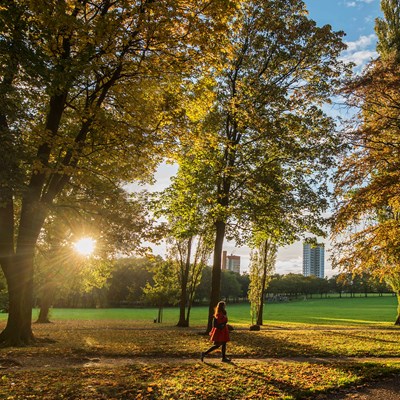PEOPLE are being asked for their views on a refreshed version of an ambitious action plan that is helping to improve air quality in Leicester.
Leicester City Council has published a new draft air quality action, which will cover the period 2025 to 2030, for public consultation.
The draft plan, which outlines measures needed to further improve air quality in Leicester and aims to build on the significant progress made since the launch of the city’s first Air Quality Action Plan in 2015.
Since 2022, Leicester has been fully compliant with all national air quality objectives across Leicester for nitrogen dioxide (NO2) and particulate matter (both PM10 and PM2.5).
Over the last ten years, annual levels of NO2 – one of the key pollutants that local authorities are required to monitor – have fallen by an average of around 38.5 per cent across the city's five monitoring stations.
The new draft air quality action plan aims to help the city maintain compliance with national air quality objectives and work towards the more ambitious World Health Organisation (WHO) guidelines.
It sets out proposed measures for consideration under the following five broad theme areas:
- Air quality monitoring, public awareness and engagement
- Promoting, supporting and encouraging sustainable transport
- Reducing emissions from transport
- Optimising traffic management
- Development control and regulatory services
Actions include maintaining, expanding and enhancing the city’s air quality monitoring network to identify and understand pollution hotspots, enable targeted interventions and support awareness raising campaigns with local schools, communities and businesses.
The city council also aims to expand further the growing network of safe and attractive routes for walkers, wheelers and cyclists, as well as continuing to invest in the city’s bus service improvement plan which could make every bus in the city electric by 2030.
Along with providing and improving infrastructure to encourage more people to use sustainable transport, the effective management of traffic flow will help cut congestions and contribute directly to further air quality improvements.
An, as a planning and regulatory authority, the council will also ensure air quality impacts are considered in the planning process, continue to control domestic and industrial emissions as far as possible and help mitigate the impact of future growth on the city’s air quality.
Cllr Geoff Whittle, assistant city mayor for environment and transport, said: “Leicester has every reason to be extremely proud of the dramatic improvements we have seen in air quality across the city over recent years.
“Since the launch of our first Air Quality Action Plan we have seen a huge reduction in air pollution. It is very encouraging that Leicester is now fully complaint with national limits for all pollutants, but we know there is still more to be done.
“We remain absolutely committed to further reducing levels of harmful air pollution to help positively impact on the health and wellbeing of everyone who lives, works or spends time in Leicester.
“The new draft air quality action plan sets out how we aim to achieve that over the next five years. We’re keen to hear people’s feedback on it and I would encourage people to take part in the consultation.”
The public consultation will run until Friday 27 September 2024. For more information, or to take part, visit www.leicester.gov.uk/consultations
Current national guidelines set an annual average limit value of 40 micrograms per cubic metre (40µg/m3 ) for NO2 in the air.
Average levels of NO2 improved significantly at all five of the city’s air quality monitoring stations in the ten years between 2013 and 2023 (the most recent data available).
At Vaughan Way – one of the city’s busiest roads – average NO2 levels for 2023 were 36.3µg/m3 compared to 49µg/m3in 2013.
At Glenhills Way, annual levels fell from 57µg/m3 in 2013 to 21.2µg/m3 in 2023, the lowest recorded level from any of the city’s five monitoring stations.
At Abbey Lane, NO2 levels were down from 37µg/m3 in 2013 to 23.1µg/m3in 2023; Melton Road saw a drop from 43µg/m3 in 2013 to 20.4µg/m3 last year; and, at St Matthews Way, a reduction from 47µg/m3 to 29.7µg/m3 has been achieved over the last ten years.
Leicester is now compliant with national guidelines for all currently stated pollutants. These also include benzene, 1,3-butadiene, carbon monoxide, lead, sulphur dioxide, PM 10 particulates and PM2.5 particulates.
All local authorities are required to produce and publish an air quality action plan as part of their statutory duties under The Environment Act 2021.
